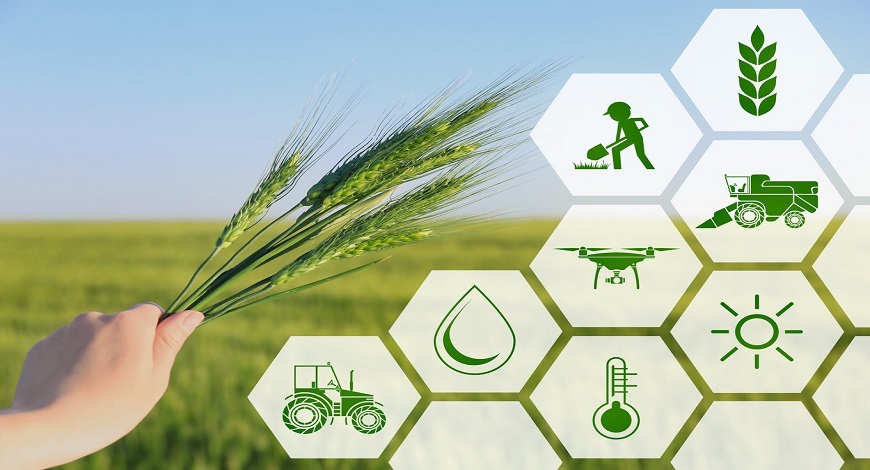Agriculture now has an exciting and fresh frontier with the advent of nanotechnology – especially nanoparticles with magnetic properties. Magnetic nanomaterials have found its application in biochemical engineering, magnetic resonance imaging, magnetic nanoparticle imaging, data management, environmental remediation, and agricultural technology.
WHAT ARE MAGNETIC NANOPARTICLES (MNPs)?
Nanotechnology is the study of things with a diameter of a few nanometers (nm) or billionths of a meter. “Nanomaterial” is defined by the International Organization for Standardization (ISO) as “a material with any external dimension in the nanoscale or having internal structure or surface structure in the nanoscale”, and “nanoparticle” is defined as “a nano-object” with all three external dimensions in the nanoscale.”
Magnetic Nanomaterials (MNMs) and Magnetic Nanoparticles (MNPs), often used interchangeably, may be seen as nano-objects that magnetic fields can manipulate. MNPs typically have two parts: a magnetic component, frequently made of iron, nickel, or cobalt, and a functional chemical component, often having biorecognition capabilities.
Magnetic nanoparticles display a phenomenon known as “superparamagnetism,” in which, when an external magnetic field is applied, they become magnetized to the point of saturation. When the magnetic field is removed, they cease to exhibit any residual magnetic interaction. This size-dependent characteristic typically manifests itself when the size of nanoparticles is as small as 10–20 nm.
Selectively attaching magnetic nanoparticles to functional molecules enables their transportation to a specific site in the presence of an external magnetic field from an electromagnet or permanent magnet. A surface coating may be necessary to stop aggregation and reduce the contact of the particles with the environment.

ADVANTAGES AND BENEFITS OF MAGNETIC NANOMATERIALS
MNMs are environmentally friendly and economical. They can be easily produced and extensively used in agricultural operations because of their superior physical and chemical characteristics. Their strength lies in their simplicity in separation, capacity for adsorption, and favorable biocompatibility characteristics.
Adaptability and utility of magnetic nano particles come from their quick and straightforward separation, which removes time-consuming and expensive separation methods. Because of their bioavailability, studies have shown that metal and metal oxide nanoparticles are quite effective in agricultural applications.
In processes relating to soil fertility, soil regeneration, and plant growth, magnetic nanoparticles have an essential role to play. MNPs have been investigated as soil fertility boosters and as a method for the magneto-assisted removal of hazardous metal ions, polyaromatic hydrocarbons (PAHs), and other organic pollutants, thereby aiding soil regeneration.
AGRICULTURAL APPLICATIONS OF MNPs
MNPs are being used as antimicrobial agents, plant growth promoters, site-targeted delivery agents, nano sensors, and the detection and removal of pesticide residue, among other applications. These materials have shown promise as antibacterial agents in the fight against plant pathogenic diseases. According to research, NPs can be used to destroy diseases inside plants by creating a magnetic system to control their movement.
MNPs can be used as a nano additive in the controlled release of fertilizers due to their distinct properties. This considerably lowers fertilizer loss due to leaching, fixation, or volatilization in soils. As a result, less fertilizer made with MNPs is needed to meet the plant’s needs, reducing the ecological impact.
Researchers from the National University of Singapore (NUS) have created a quick and sensitive screening method for food that may find trace quantities of synthetic pesticides frequently used on crops. Using magnetic nanoparticles, the novel approach speeds up pesticide extraction and cuts screening time to under two hours.
Other applications that use MNPs include the identifying of genetic disorders and microbiological pathogens, tissue matching, plant protection, and gene analysis. Infectious agent detection is another application for MNPs. For instance, a carbon-paste electrode was created using magnetite nanotubes with a silica coating in order to detect various substances, such as uric acid and insecticides.
CONCLUSION
The production of several magnetic nanomaterials has been the subject of extensive research, and as a result, many new farming applications are currently being developed. Research is reducing the complexity and cost of the manufacturing processes for magnetic nanomaterials, showing increased potential in the agricultural sector, especially for large-scale applications. With revolutionary nanotools for the control of quick disease diagnosis, boosting plant nutrient absorption, and other uses, magnetic nanoparticles have the potential to advance agricultural and allied industries.

